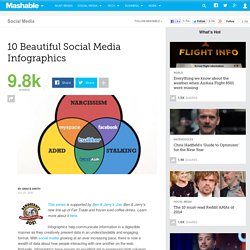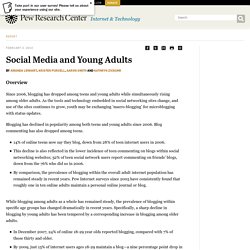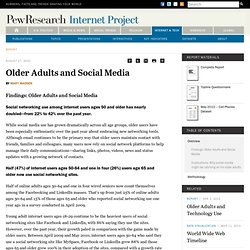

Social Media News, Insights and Tips. 10 Cool Social Media Infographics - Methodical Madness - International Brand Management. In the age of the 30-second attention span and a 24/7 information availability, you need more than plain words and ordinary graphics to communicate to the social masses.

Luckily, we have the infographic—a hybrid form of communication. A visual sampling of data. The amuse-bouche of in-depth analysis. Infographics are not new of course. They have been a staple of cavemen and cavewomen for years. Aurochs on a cave painting in Lascaux, France And because of the lack of a Google Translator in space, NASA also deemed the infographic a fitting way to communicate with any E.T.s the Pioneer space craft may contact. The plaque attached to Pioneer 10 Today, we thought we'd show you 10 of our favorite infographics that help shed some light on social media sites. 1. Just to kick things off, we thought it would be cool to see a map of the Internet based on Internet topology data from the Cooperative Association for Internet Data Analysis (CAIDA). 2. 3.
Facebook is the king of all social media. 4. 5. 6. 10 Beautiful Social Media Infographics. This series is supported by Ben & Jerry's Joe, Ben & Jerry's new line-up of Fair Trade and frozen iced coffee drinks.

Learn more about it here. Infographics help communicate information in a digestible manner as they creatively present data in an understandable and engaging format. With social media growing at an ever increasing pace, there is now a wealth of data about how people interacting with one another on the web. Naturally, infographics have proven an excellent aid in expressing high volumes of social web information in a clear, visually appealing manner. Here are 10 infographics that prove as beautiful as they are interesting. 1. 55 Interesting Social Media Infographics. What’s Hot This Week in Social Media News. Welcome to our weekly edition of what’s hot in social media news.

To help you stay up to date with social media, here are some of the news items that caught our attention. What’s New This Week? Facebook Introduces Sponsored Stories: Companies can now sponsor ads in the sidebar to republish check-ins and other updates made by the viewer’s friends. This shows viewers what their friends have to say about the brands sponsoring these ads. Watch the video below to see how it works: Get Facebook Page Updates Via Email With Hyper Alerts: Many Facebook admins have been asking for this service to help them manage and develop their Facebook pages.
LinkedIn Launches InMaps to Visualize Your Network: InMaps helps you to “understand the relationships between you and your entire set of LinkedIn connections.” Babylon Launches Live Translation Community: This new Q&A platform provides a great service for businesses with multilingual audiences. Social Networking. Older Adults and Technology Use Adoption is increasing, but many seniors remain isolated from digital life Cancer Communication in the Digital Age Susannah Fox will present the latest research on social media and health at a workshop hosted by the President’s Cancer Panel at the National Cancer Institute: “Cancer Communication: In the Digital Era, Opportunities Amongst the Challenges.”

The Web at 25 in the U.S. The overall verdict: The internet has been a plus for society and an especially good thing for individual users Mapping Twitter Topic Networks: From Polarized Crowds to Community Clusters People connect to form groups on Twitter for a variety of purposes. Social Media and Young Adults. By Amanda Lenhart, Kristen Purcell, Aaron Smith and Kathryn Zickuhr Overview Since 2006, blogging has dropped among teens and young adults while simultaneously rising among older adults.

As the tools and technology embedded in social networking sites change, and use of the sites continues to grow, youth may be exchanging ‘macro-blogging’ for microblogging with status updates. Blogging has declined in popularity among both teens and young adults since 2006. Blog commenting has also dropped among teens. Older Adults and Social Media. Findings: Older Adults and Social Media Social networking use among internet users ages 50 and older has nearly doubled—from 22% to 42% over the past year.

While social media use has grown dramatically across all age groups, older users have been especially enthusiastic over the past year about embracing new networking tools. Although email continues to be the primary way that older users maintain contact with friends, families and colleagues, many users now rely on social network platforms to help manage their daily communications—sharing links, photos, videos, news and status updates with a growing network of contacts. Adults and Social Network Websites. One third (35%) of American adult internet users have a profile on an online social network site, four times as many as four years ago, but still much lower than the 65% of online American teens who use social networks The share of adult internet users who have a profile on an online social network site has more than quadrupled in the past four years — from 8% in 2005 to 35% now, according to the Pew Internet & American Life Project’s December 2008 tracking survey.

While media coverage and policy attention focus heavily on how children and young adults use social network sites, adults still make up the bulk of the users of these websites. Adults make up a larger portion of the US population than teens, which is why the 35% number represents a larger number of users than the 65% of online teens who also use online social networks. Specifically, our findings suggest that: